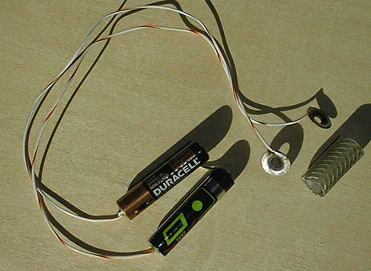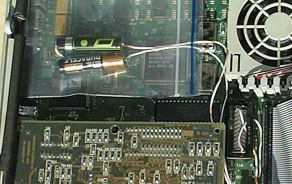While preparing some old Macs for use I found a few bad lithium cells - so many that it was going to break the bank at $10 each. That's more than the Macs were worth. I found another way:
Materials: 2 each, 1.5 volt AA dry cells 2 each. steel washers 1 each, slice of tubing 1 each, plastic envelope 1 foot, AWG 24 insulated wire. solder with rosin flux in the core
The washers are used to make terminals to mate with the spring ends of the original holder for the lithium cell. I had some dimpled ones that were originally used in conjunction with #6 flat head machine screws. They should be mild steel or brass so that they will accept solder using rosin flux. Plumber's solder is a no-no because of corrosion
The tubing I cut from the rinsing tube off of an old kitchen faucet. It should match the diameter of a lithium cell and be cut to the same length.
Tin the ends of the dry cells and connect them in series, plus to minus, using a short piece of wire. It helps to scratch the battery terminals with the soldering iron to help the solder wet the surface.
Cut and strip 2 six inch pieces of wire and solder one end of each to a washer. It helps to use two wire colors and remember which is positive.
Solder the other ends to the remaining terminals of the newly created two-cell battery.

Insert the washers into the original battery holder in the Mac and use the piece of tubing to hold them against the connections. Take care to get the positive terminal connected to the + end of the battery holder. Replace the cover.
Put the dry cells into the plastic bag and place the assembly where it won't obstruct the fan and won't bounce around too much if the computer is moved.

The life of the lithium cell is supposed to be 10 years. The alkaline cells won't last that long but then older Macs probably won't be useful for that long either.
In Mac-II series computers there are two lithium cells which are used to supply both 3 and 6 volts for startup and for the clock. For those you'll need four AA cells and will have to connect using three pieces of wire. Details are left to the reader.
Douglas P. McNutt The MacNauchtan Laboratory 7255 Suntide Place Colorado Springs, CO 80919-1060 voice 719 593 8192 dmcnutt@macnauchtan.com http://www.macnauchtan.com/